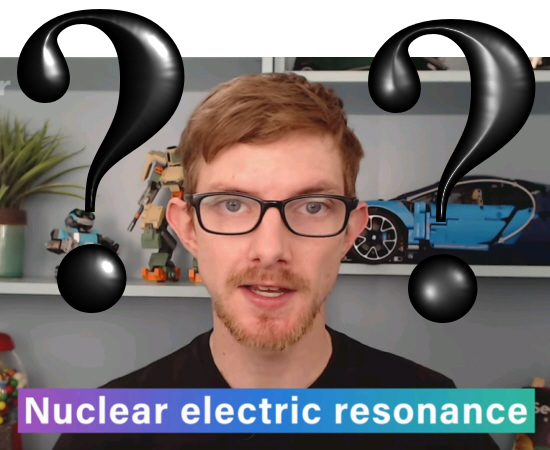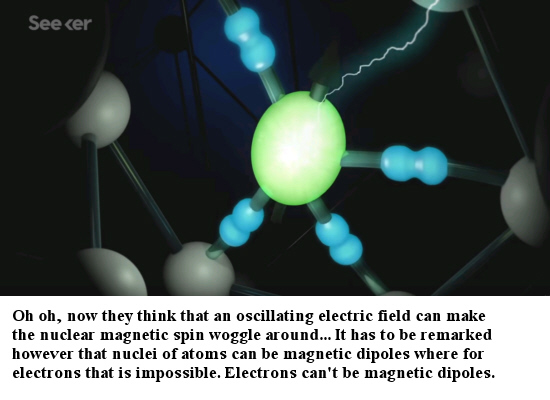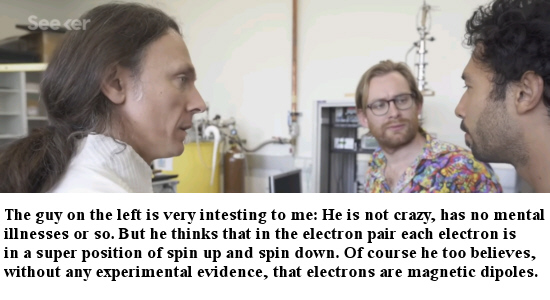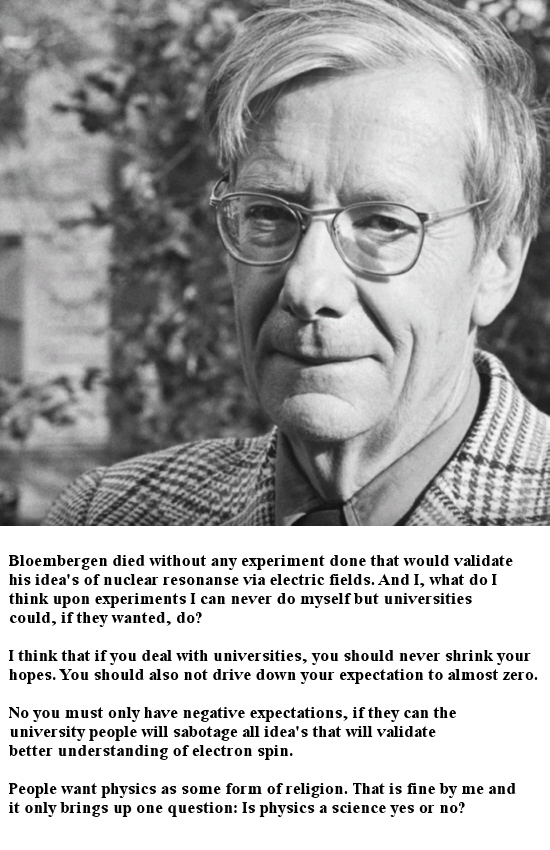Always when physics people explain stuff like nuclear magnetic resonance and it’s cousin electron resonance, it is always explained in terms of alignment of the particle spin with the applied external magnetic field. In my view that is a bizarre explanation because that would cause hardly any acceleration of the nuclei and electrons, so how can that give some measureable em radiation?
Yet in medical applications like MRI there is plenty of em radiation to make an image from. Where does that come from? In my view where particles like electrons and protons carry magnetic charge and as such are all magnetic monopoles, the resonance works because there is actually something resonating… It must look a lot like harmonic resonance or like a mass on a spring if you want. Basically it should not make much of a difference if you use oscillating magnetic fields or an oscillating electric field. Ok, in practice like medical MRI scanning I don’t think you can use electric fields because most atoms and molecules in your body are not ions, that is they are neutral under electric fields oscillating or not.
To my surprise in a video about a so called ‘Breakthrough in quantum computing’ all of a sudden the concept of nuclear electric resonance came along. Ok, it was on the Youtube channel named Seeker, so often it is not carefully thought through, but anyway. it might be Seeker but the concept of nuclear electric resonance should have large similarities with nuclear magnetic resonance if my idea’s upon magnetic charge are correct…
Let us take the time and look at a few screen shots I made from that Seeker video:

At some points in time the video will get highly confusing, after all it is the Seeker channel combined with the insights of that Australian team trying to make quantum computer with qbits made from magnetic spins. Of course that is not going to work because if permanent magnetism is a charge you just cannot make a super position of it. So if I am right, all those kind of quantum computer will never work. Let’s go to the next screen shot:

Of course this fantastic part of the video is inspired by how the university people explain magnetic resonance. If you view the video below, please remark there likely is no arrow of a magnetic dipole anyway.
It has to be remarked however that atomic nuclei can have many protons and neutrons and as such all kinds of magnetic configurations should be possible. Next screen shot:

The guy on the left, I don’t know his name, explains the electron pair as next: These two electrons are in a superposition of spin up and spin down. It is just like man and wife, there are two persons but you do not know if it is the man or the wife. Only when you make a measurement on one of the electrons, you instantly know the spin state of the other electron…
Don’t forget those people from blah blah land have zero experimental evidence for the electron being a magnetic dipole. After having said that, why not go to the next screen shot?

You should not feel much pity for Mr. Bloembergen. After all he got a Nobel prize so he died while still having plenty of money. You are looking only at an old photograph of just one more perfumed prince. Also, Nobel prize or not, it’s just another perfumed human being not understanding it is impossible for the electrons to have two magnetic poles.
After so many screenshots, enjoy the deep thinking as in the next Youtube video:
Before we split I want to link to a few experiments that I posted on the other website on 11 May. One of those experiments is completely undoable, the second requires a lot of work because there a beam of electrons should get split in half in a cyclotron. The third experiment is showing that magnetic domains always have surplusses of either north pole or south pole electrons. That is stuff I cannot do myself in my kitchen, garden or living room. The likelihood that someone else will pick that up in the next 10 years is relatively low, it is a wild guess but at best it will be something like 1% to at most 4 or 5%.
As you see my expectations are not very high. Say for yourself: how likely is it that an article about an experiment that validates the magnetic monopole character of electrons passes the peer review process?
That is not very high… Ok, end of this post; live well and think well.